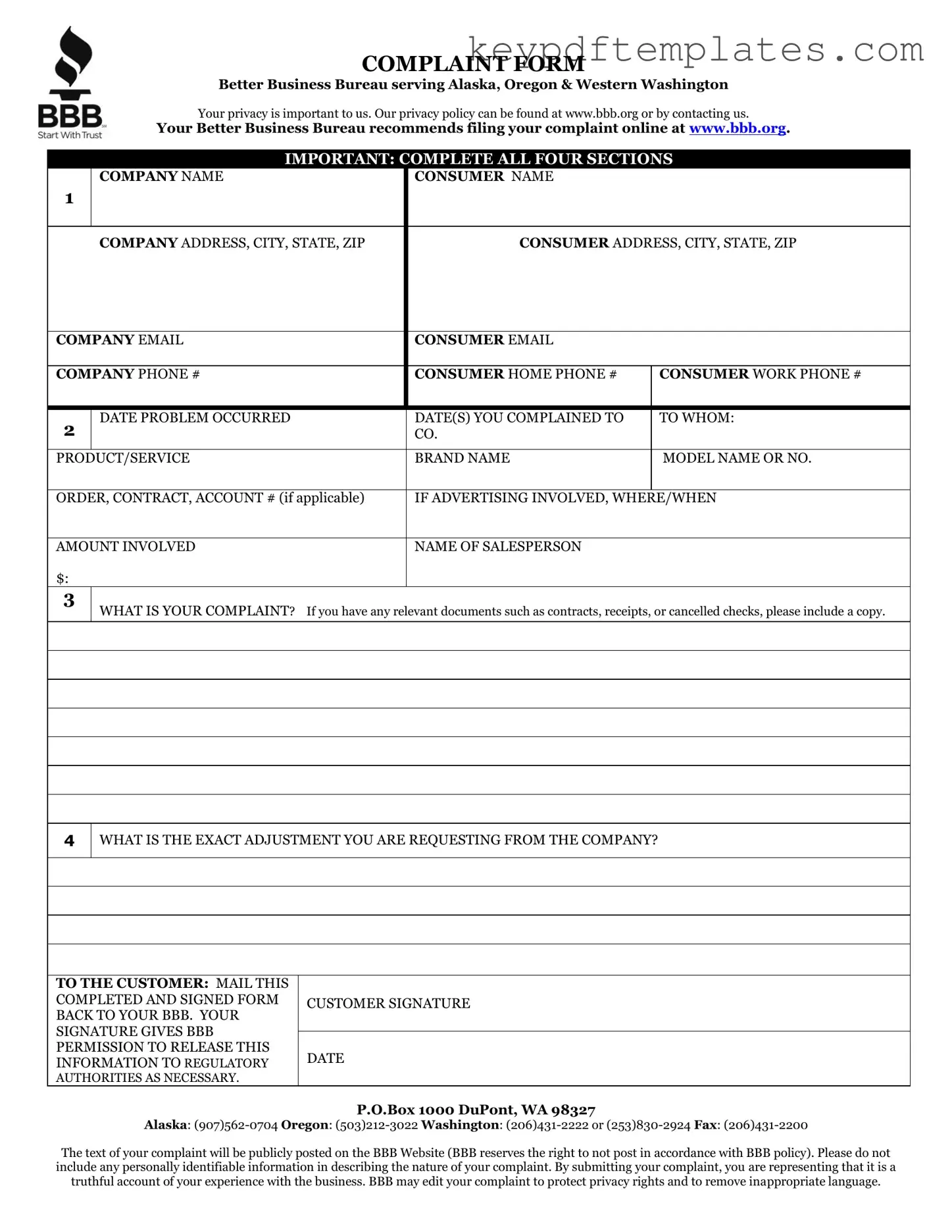Get Bbb Complaint Form
The BBB Complaint Form is a tool that allows consumers to formally express their grievances against businesses. By submitting this form, individuals can seek resolution for issues such as poor service, defective products, or misleading advertising. Understanding how to effectively use this form can empower consumers to advocate for their rights and hold businesses accountable.
Modify Document Online
